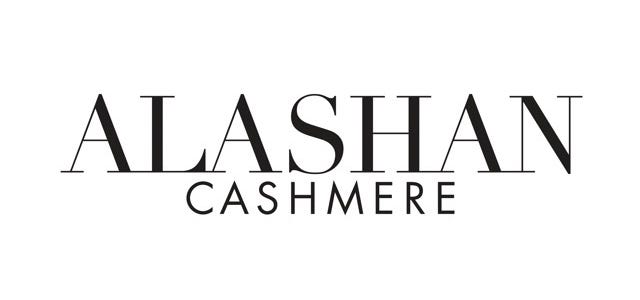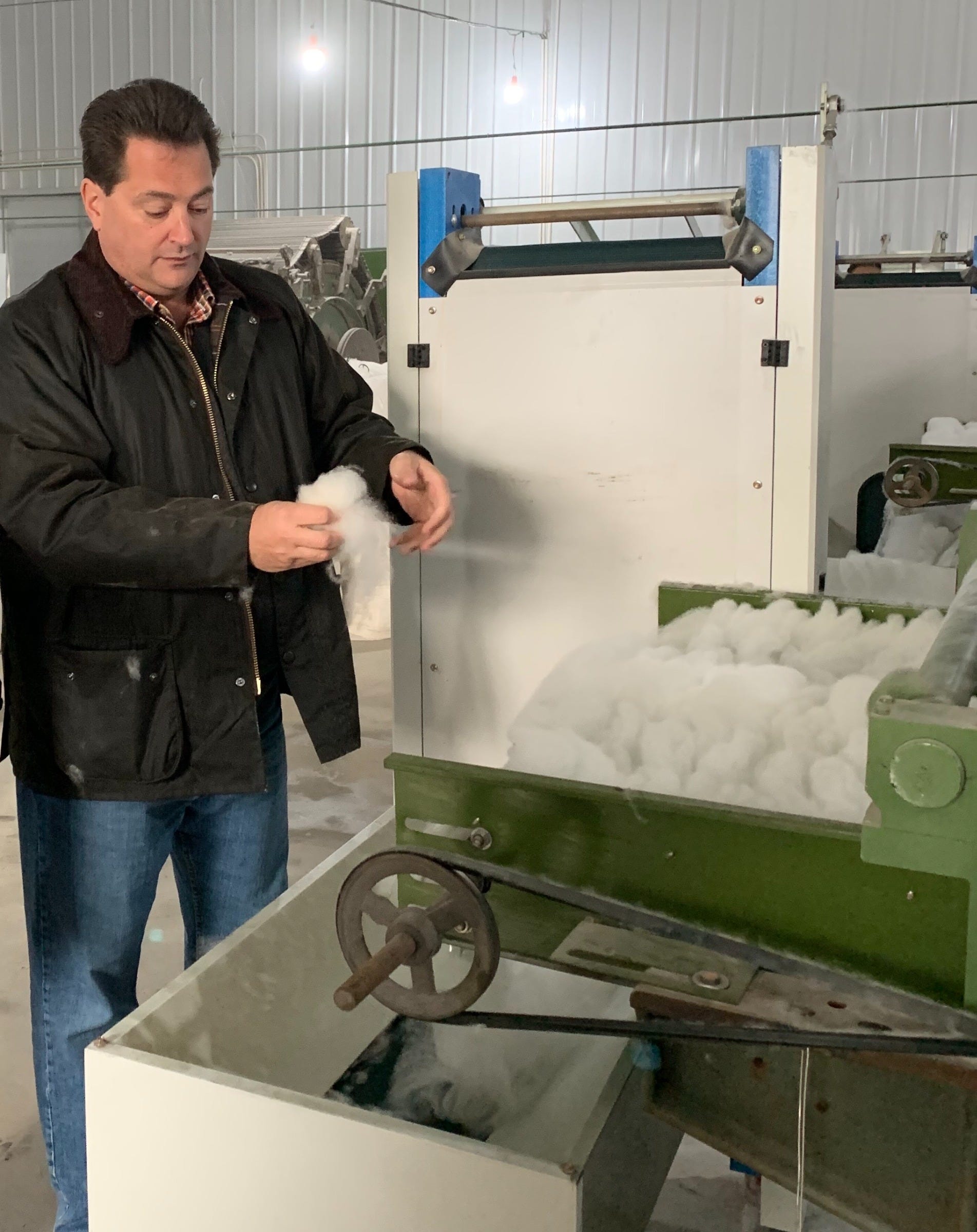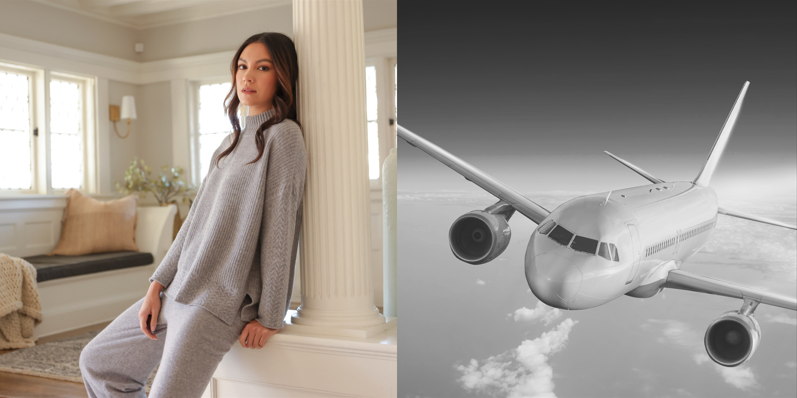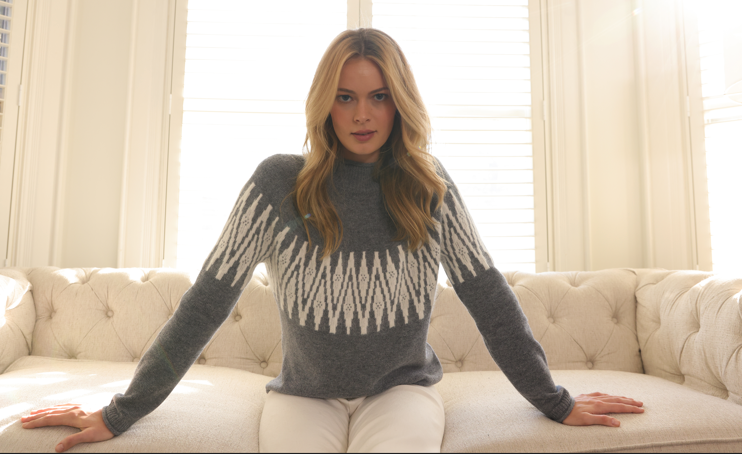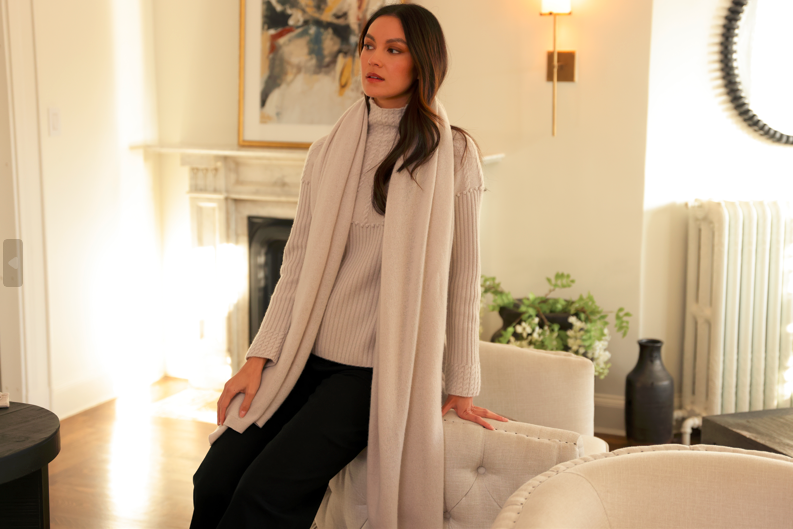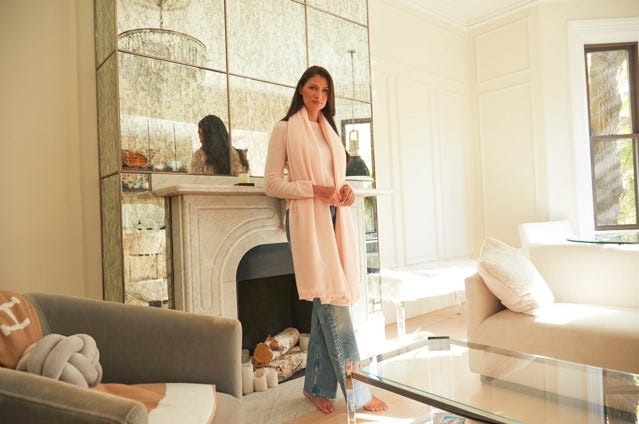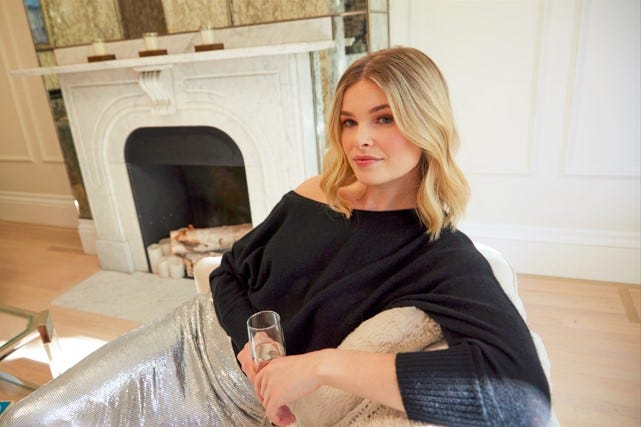The Luxurious Properties of Cashmere: Origins, Quality, and Why It Is Worth the Investment
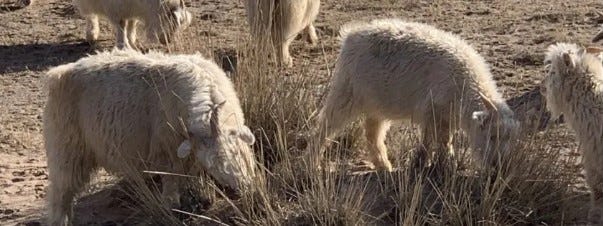
When it comes to indulgent, must-have fabrics, cashmere is the gold standard. But what makes cashmere so special? Why does it carry such a premium price tag, and what sets it apart from other fibers? Let us dive into the world of cashmere—it’s origins, its one-of-a-kind qualities, and why it is a timeless investment for any wardrobe.
Where Does Cashmere Come From?
Cashmere is not wool, but the fine hair of the cashmere goat. It is the undercoat of hair that grows to keep the goat warm through the harsh climate and geographic conditions of the high steppe and desert regions of China, Mongolia, Iran, Afghanistan and other regions of Central Asia. These goats have been raised by nomadic herdsmen of Central Asia for over 4,000 years. The nomads then, and to this modern day, use goats as a source of milk, cheese, meat, leather and of course fiber.
What Makes Cashmere So Expensive?
Scarcity and processing are the main reasons. There is only so much cashmere grown each year. The average goat produces 120-170 grams cashmere per year. Sheep can produce up to 15 kilograms of wool. The annual clip of cashmere is between 15,000 and 20,000 tons per year. Sheep wool production, by comparison is over 2,000,000 tons per year.
The processing of cashmere fiber to get it ready for dying and yarn spinning is another reason for the cost. Each goat in China and Mongolia is combed by hand every spring to collect the fiber. Cashmere goats grow two sets of fleeces. The first is the outer guard hair, which is coarse and similar to adult human hair in terms of fineness. The second fleece is the fine cashmere under down layer. When the goats are combed both types of fiber are intermingled and come off in the combs. That fiber is called “greasy” cashmere. The greasy cashmere must then be sorted for grade and color. White fiber is separated from darker, brown fiber. The greasy, sorted fiber must them be scoured, where about 20-25% of the original greasy weight is removed in the form of dirt and grease. Once the fiber is scoured and dried, it is ready for the “dehairing” process, which is when the two fleece types are mechanically separated. This process results in what is called “dehaired cashmere”. The dehairing process is slow and requires specially manufactured textile machinery. There is usually another 20-40% loss as the fiber is dehaired and the coarse hair removed. On average, the yield of 1 greasy kilogram of Mongolian fiber to dehaired cashmere is 500 grams, or about 50%. The yields of other Central Asian, Iranian and Afghan cashmere types can be even lower.
Dehaired cashmere comes in many grades and is from many origins. The best fiber is white. White cashmere accepts brighter and more vibrant dye stuff. At Alashan Cashmere Company, we offer a rainbow of color each season and we can only do this by collecting and dying very clean, white cashmere.
The average diameter of the dehaired cashmere also determines value and it is measured in microns. The best Inner Mongolian white cashmere is in the high 14-micron range. The top end of the range of cashmere diameter is in the low -to-mid 19 micron range. Any goat hair above 19.5 microns is not considered cashmere. The final characteristic for cashmere fiber value is length. The longer the dehaired fiber, the finer the yarn that can be spun.
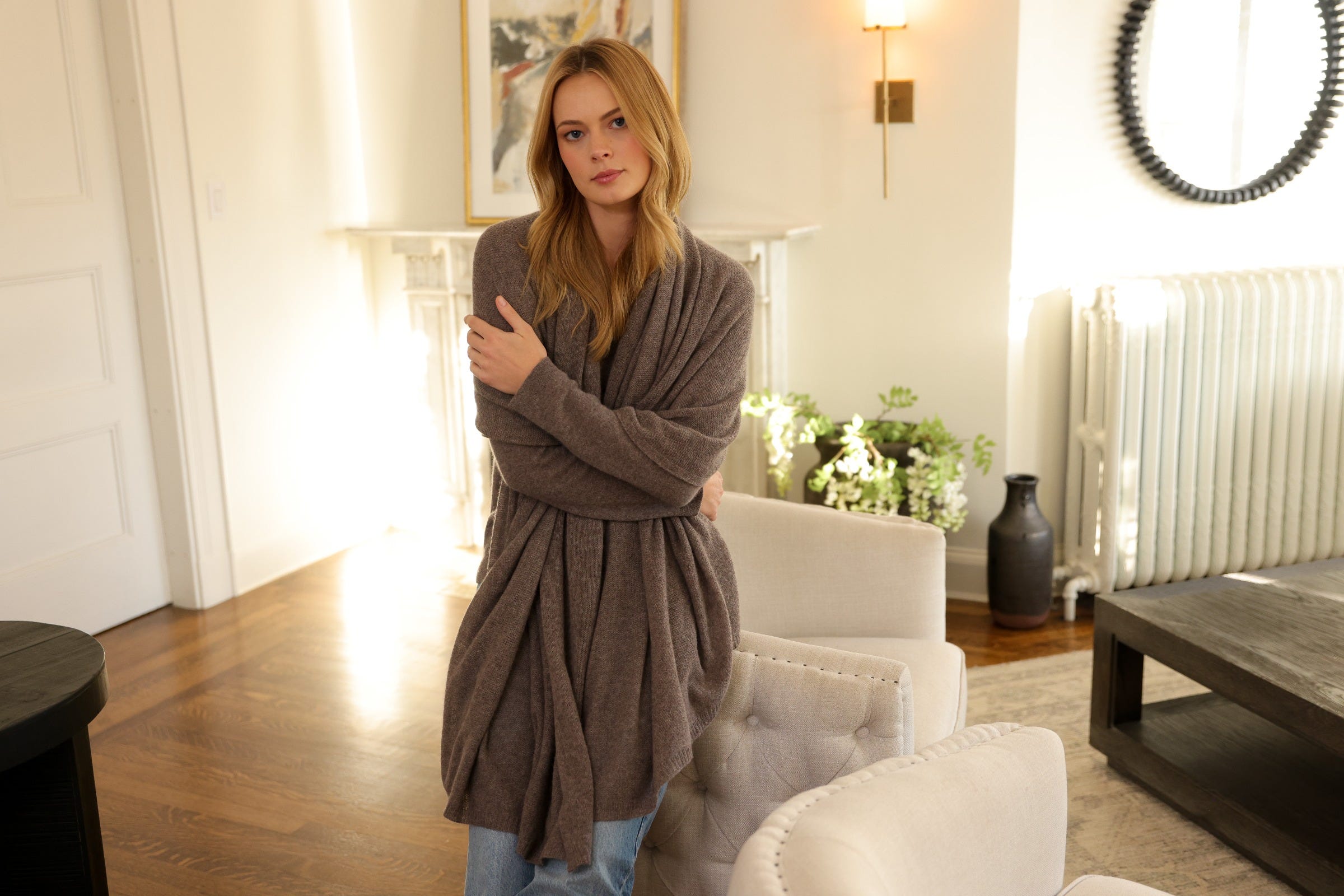
The Unique Properties of Cashmere
Cashmere is revered for its lightweight warmth—it is up to eight times warmer than sheep wool while being significantly lighter. This makes it perfect for layering, whether you are styling a cashmere sweater, topping off your look with a luxe cashmere scarf or topper, or taking to the outdoors. Plus, cashmere’s breathability ensures that you stay cozy without overheating.
And let us not forget the softness. There is a reason people say wearing cashmere feels like wrapping yourself in a cloud. It is hypoallergenic, meaning it will not irritate sensitive skin, making it a perfect choice for those who seek both luxury and comfort.
An Investment That Lasts
While cashmere may come with a higher price tag, it is an investment in long-term luxury. With proper care, a cashmere sweater or topper can last for years, maintaining its softness, warmth, and shape. Cashmere can be compared to the hair on your head when it comes to care and look. You need to wash and comb your hard from time to time to keep it looking good. The same can be said for a good cashmere sweater.
Unlike fast-fashion fabrics, which tend to lose their appeal after a season or two, cashmere is timeless. The fact that it never goes out of style makes it a wardrobe staple for years to come.
When you wrap yourself in cashmere, you are not just wearing a piece of fabric or cloth, but you are embracing centuries of culture, tradition, quality, and pure luxury. It is an indulgence worth making, whether for yourself or as a thoughtful gift for someone special.
